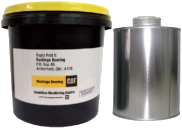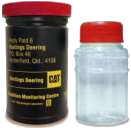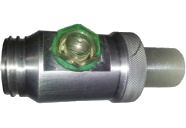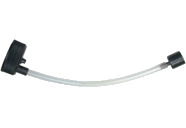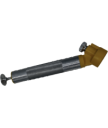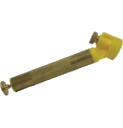Diesel Analysis
Fuel is probably the largest single expense faced by heavy equipment operators. It pays to ensure that the quality of the fuel you have purchased is up to the job. Contaminated fuel can reduce the engine performance and may cause abnormal or catastrophic wear in engine components such as fuel pumps and injectors.
Diesel fuel testing ensures that you will not sacrifice power or reliability by using a sub-standard product. The program detects fuel deterioration and determines if inherent qualities fall within required limits.
Elemental Analysis
Elemental analysis will identify the presence of wear metals, along with contamination by lubricating oil additives, dirt, salt water and fuel sulfur.
Oxides of sulfur are pollutants contributing to acid rain and increase lubricating oil acidity. This acidity will lead to corrosive engine damage. By law Australian diesel fuel is restricted to 10ppm (0.001%).
Distillation / Cetane Index
The sample is distilled using a specialized distillation unit and the profile of this distillation will determine the cetane index.
The cetane index can be used as a guide to the ignition qualities of the diesel fuel. The higher the cetane index is, the easier your engine will start.
This test is available on specially selected diesel sample kits and is not included in the basic sample test suite.
Viscosity
The viscosity of a liquid is a measure of its internal friction or its readiness to flow. Various factors contribute to a fluid's viscosity and one of the main things that changes a fluid's viscosity is Temperature.
Our laboratory routinely analyses the viscosity of fuel samples using an instrument that measures "Kinematic Viscosity". For most samples this involves reading the viscosity of the sample at a fixed temperature of 40 degrees Celcius.
Since the fuel acts as a lubricant within the fuel system, it's viscosity must be within a range of values that effectively contribute to this process.
Fuel acts as a lubricant within the fuel system.
Water by Karl Fischer
The water level in high pressure fuel systems must be closely monitored in order to keep it below a safe amount. Caterpillar recommends keeping the water content below 500ppm (0.05%) to avoid damaging critical fuel components.
Excessive water can lead to injector scuffing and damage to other fuel system components.
Fuel microbes need water to survive, so keeping the water content low is also critical to keeping the microbes from multiplying.
PQ Index
PQ Index measures the overall ferrous content present within a diesel sample. This content could be comprised of large pieces of metal or tiny particles suspended in the oil. The higher the PQ value, the more contaminated the sample is with ferrous metal. PQ Index is a dimensionless value, so the value is not reported using any units.
Brass component wear in fuel delivery systems will not be detected by PQ Index.
Particle Count
Counting the tiny particles in a fuel sample identifies harmful contaminants that shorten component life. Modern high pressure fuel systems require extremely clean fuel to prevent erosion of injector tips and other fuel system components.
The recommended maximum ISO value for clean fuel is 18/16/13, anything higher than this and you risk damaging vital engine components.
Visual Inspection
Samples are routinely inspected by an operator, looking for any abnormal contaminants. Water, rust, dirt, wear metals and other foreign matter can be detected using this method.
Visual inspection of fuel differs from oil in that smaller amounts of contaminants can represent a problem and this is given due consideration during the analysis.
Haze Rating (Appearance)
The haze rating for a fuel is measured on a scale of 1 to 6 and indicates the relative haziness of the fuel due to suspended water and other contaminants.
Fuels with a haze rating over 2 should be checked for water content, particle counts and possible microbe growth.
In order to test for haze rating, at least 1L of sample must be used, and as such, this test is only performed on certain fuel sample kits.
Cloud Point
The cloud point of the fuel is temperature of the fuel at which wax crystals will start to form. These crystals block filters and cause hard starting in cold conditions.
The cloud point can be used as a guide to match the class of fuel for use within a specific climate.
Biodiesel density ranges differ from those of mineral diesel fuel.
Flash Point
Flash point is not a performance indicator for diesel fuels, but it must meet a certain minimum value in order to meet with Australian dangerous goods transport requirements for a combustible liquid.
Contamination by another liquid (e.g. petrol or solvent) will lower the flash point.
Density / API
Density of the fuel determines the potential energy the fuel contains which determines the rate of fuel consumption in a modern diesel engine.
Density values above the specified maximum of 0.85g/cc (8500g/10L) would result in increased exhaust smoke and engine deposits.
Biodiesel density ranges differ from those of mineral diesel fuel, so be sure to check your limits.
Lovibond Colour
Lovibond colour is the colour of the diesel compared to a standard colour profile specified by the ASTM.
Colour is not a direct guide to the fuel's performance characteristics, but as fuel ages, the colour profile will change, resulting in a darker colour.
Exhaust gas and contamination by engine oil will also change the colour profile for fuel, so these conditions will also need to be considered. Fuels may also be dyed for security and identification purposes.
Water and Sediment
Fuel samples are placed in a centrifuge in order to separate the water and sediment from the fuel. This is then measured in a calibrated tube to determine the total amount of water and sediment present in the sample.
Excessive amount of water and sediment can contribute to filter blocking, and growth of fuel microbes. Water also reduces the lubricity qualities of the fuel being used.
Lubricity
Lubricity is measurement of the lubricating quality of the fuel. It's determined by a high frequency reciprocating rig and measures the wear scar produced on a steel ball and plate. The smaller the wear scar produced, the better the lubricating quality of the fuel. The Australian fuel standard specifies a maximum wear scar of 0.460mm. Entrained water or hard particles will increase the dimensions of the resulting wear scar.
Microbial Contamination
ATP is a measure of the microbial activity. The advantage of ATP over traditional methods is that the test can be completed in less than 15mins, rather than waiting for up to a week for the microbes to grow on a culture medium.
Additional Testing
Copper corrosion is measured by placing a polished copper strip in a heated sample of the diesel fuel for a specified period of time. Any corrosive substances, such as sulfur compounds will cause discolouration of the strip. The colour is compared to a standard colour chart to assign the copper corrosion value.
